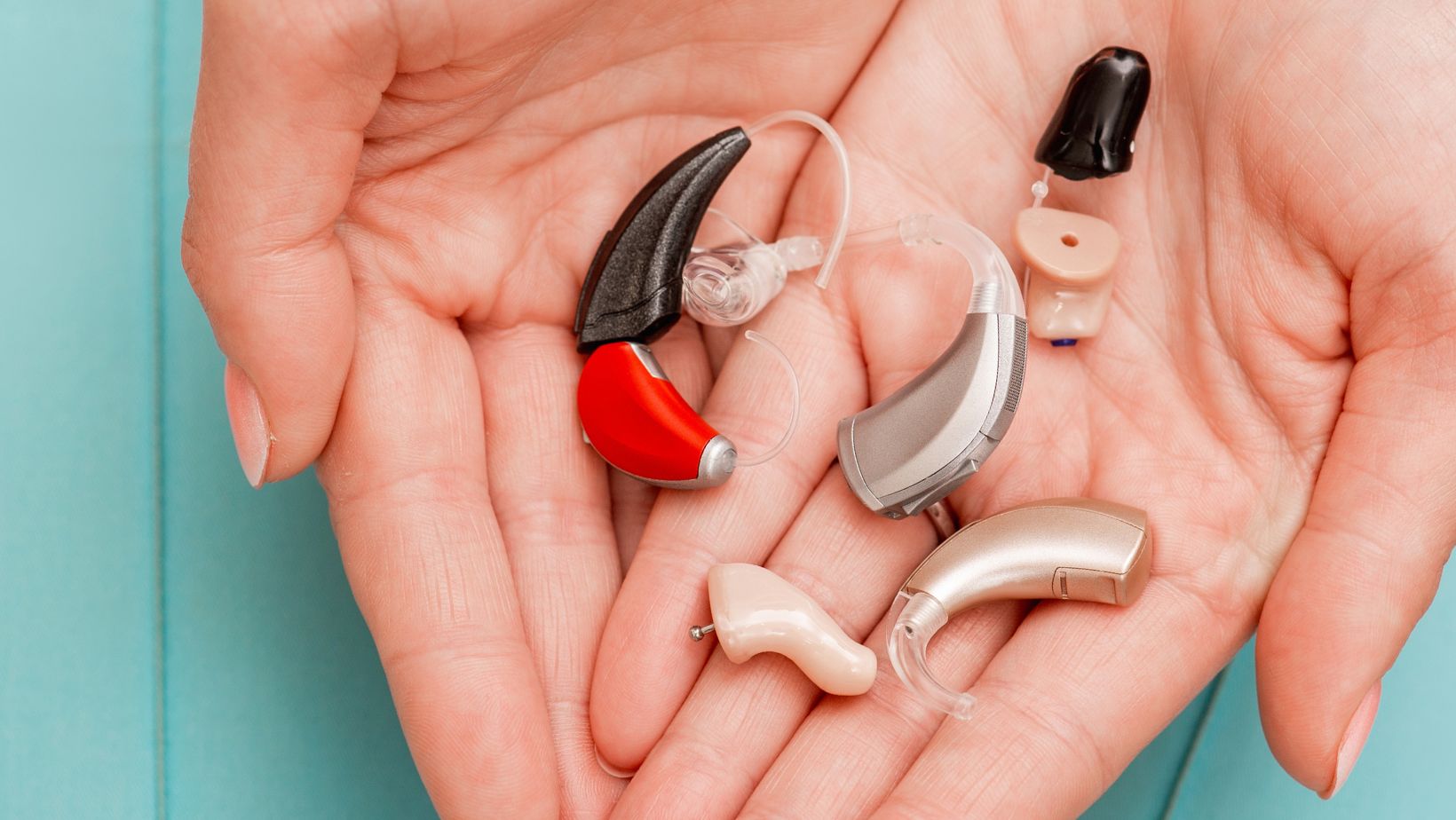When it comes to selecting the right hearing aid, the range of options can be overwhelming. Whether you are suffering from mild or severe hearing loss, choosing the right hearing aid is crucial to improving your quality of life. In this blog, we will simplify the process for you by providing clear guidance on different types of hearing aids.
Taking the first step towards better hearing can be daunting, but with the correct guidance, it doesn’t have to be. At Total Hearing, we’re here to help you navigate through the complexities of selecting the right hearing aid for your unique needs.
Understanding Hearing Loss
Before diving into the different types of hearing aids available, it’s crucial to have a basic understanding of hearing loss. This condition affects millions of people worldwide and can occur at any age. Hearing loss is categorized by type (conductive, sensorineural, or mixed) and degree (mild, moderate, severe, or profound).
It’s important to consult with an audiologist to determine the type and degree of your hearing loss, as this will play a significant role in selecting the right hearing aid for you.
Types of Hearing Aids
There are several types of hearing aids available on the market, each with its unique design and features.
Open Fit
Open-fit hearing aids are one of the most popular types, as they provide users with a comfortable and discreet option. These aids sit behind the ear and have a small tube that directs sound into the ear canal.
Best suited for: High-frequency hearing loss or mild to moderate hearing loss.
Features:
- Discreet design
- Comfortable to wear
- Good for active lifestyles due to sweat and moisture resistance.
Behind-the-Ear (BTE)
Behind-the-ear (BTE) hearing aids are larger and sit behind the ear, with a tube that connects to an earmold inside the ear. These aids offer many advanced features like noise reduction and Bluetooth connectivity.
Best suited for: Mild to profound hearing loss
Features:
- Advanced technology for noise reduction and improved sound clarity
- The larger size makes it easier to handle and adjust
- Suitable for all types of hearing loss.
Behind-the-Ear (BTE) Micro
Behind-the-ear (BTE) micro hearing aids are similar to BTE models, but they are smaller and more discreet. They sit behind the ear and have a thin tube that connects to a small dome in the ear canal. BTE micro aids are ideal for those with mild to moderate hearing loss.
Best suited for Mild to profound hearing loss
Features:
- Smaller and more discreet design
- Good for active lifestyles due to sweat and moisture resistance
- Advanced features like noise reduction and directional microphones.
In-the-Ear (ITE)
In-the-ear (ITE) hearing aids are custom-made to fit perfectly inside the ear canal. There are two types of ITE aids: full shell and half shell. Full shell ITE aids fill most of the outer ear, while half-shell ITE aids only fill a portion.
Best suited for Mild to severe hearing loss
Features:
- Custom-made for a perfect fit
- The larger size allows for more advanced features like directional microphones and volume control
- Less visible than BTE aids.
In-the-Canal (ITC)
In-the-canal (ITC) hearing aids are similar to ITE aids, but they are smaller and sit deeper inside the ear canal. They are less visible than other types of hearing aids.
Best suited for: Mild to moderately severe hearing loss
Features:
- Discreet and nearly invisible
- Custom-made for a perfect fit
- Ideal for those with smaller ear canals.
Completely-in-Canal (CIC)
Completely-in-canal (CIC) hearing aids are the smallest type of hearing aid, as they sit deep inside the ear canal and are almost invisible. These aids are custom-made for each individual.
Best suited for Mild to moderately severe hearing loss
Features:
- Nearly invisible
- Custom-made for a perfect fit
- Good for active lifestyles due to sweat and moisture resistance.
Factors to Consider When Choosing a Hearing Aid
When choosing a hearing aid, there are several influencing factors to consider. These factors can significantly affect your hearing aid selection, ensuring you get a device that not only improves your hearing but also fits comfortably into your lifestyle.
Lifestyle (Active vs Sedentary)
Your lifestyle plays a crucial role in determining the type of hearing aid that will be most suitable for you. For instance, if you are active and participate in sports or enjoy outdoor activities, an open-fit or behind-the-ear model may be a better choice than an in-ear aid.
Degree of Hearing Loss
As mentioned earlier, the degree of your hearing loss will greatly impact the type of hearing aid you need. For severe to profound hearing loss, a behind-the-ear model with advanced features may be necessary, while for mild hearing loss, a smaller and more discreet option may suffice.
Cost
Hearing aids can vary in price, depending on their design, features, and brand. It’s essential to consider your budget when selecting a hearing aid, and also keep in mind that some insurance plans may cover the cost of hearing aids.
Take the First Step Towards Better Hearing Today
Don’t let hearing loss hold you back from living a full and vibrant life. Reach out to us today to start your journey towards improved hearing and overall well-being. Let us guide you through each step so you can make an informed decision and ultimately, enhance your hearing experience. Call to book an appointment or explore our locations to visit us in person.


